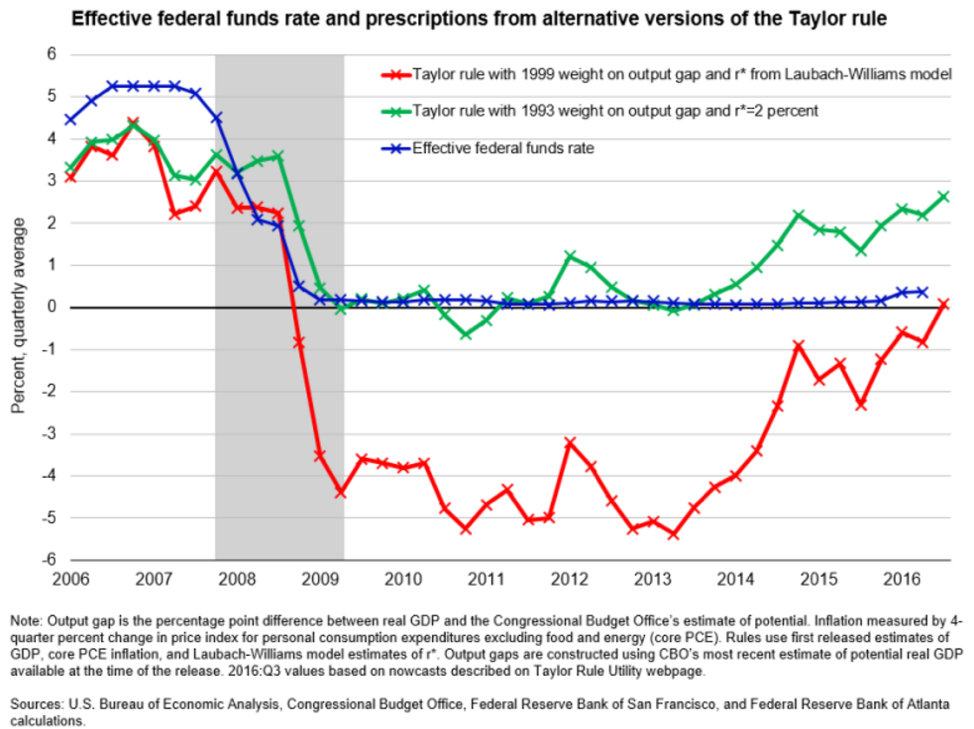Market Money and the Rationale for Central Banks, Part II
In an earlier post, I juxtaposed monetary policy with the dynamics of money creation in the market. Monetary policy at its best is predictable and responsive to changing demand for money and credit. Rules that delineate a central bank’s responses to changes in the economic environment are likely to help investors form coherent expectations. In this post, I hope to demonstrate that even central banking constrained by rules is problematic as it merely moves central banks’ choices to the more abstract level of selecting and interpreting rules.
Monetary Rules and Predictability
The discussion of rules vs. discretion in monetary policy arose in response to the theory of rational expectations. Rational-expectations theory claims that investors’ expectations about asset values tend to be correct on average. Markets operate efficiently when investors are able to form coherent expectations of the future. Policy uncertainty prevents this from happening. Policy, at its best, is unsurprising—boring, really. By this criterion, we should rate the Yellen Fed more highly than the Bernanke Fed, and Greenspan’s tenure even higher.
Rules are meant to make monetary policy predictable. But not just any rule will do. A monetary rule ought to emulate market processes that help offset shortfalls in total expenditures and imbalances between demand for and supply of loanable funds. But information and incentive constraints should not be assumed away. Policy makers must have proper incentives to implement a monetary rule consistently and predictably, something they may not be inclined to do in a crisis. As we review possible rules, we will also discuss problems with implementing them.
Nominal-Income-Level Target
A nominal-income-level target attempts to offset divergences between observed and potential growth rates while maintaining a chosen, typically positive rate of inflation. These divergences occur because demand to hold money increases in an environment in which prices do not instantly adjust to their new equilibrium level. Until prices fully adjust, a shortage of money prevents all goods available for sale from being sold. If the shortage persists, the macroeconomy experiences an output gap—that is, the rate of growth of real GDP falls below its potential.
As my colleague Alex Salter recently noted, “Money demand is notoriously difficult to forecast.” In a 2015 article, Scott Sumner proposed a solution to the problem of forecasting money demand. In his plan, the government implements a nominal GDP (NGDP) futures market in which traders can profit by predicting the future path of NGDP. An investor’s purchase of NGDP futures options indicates that they expect the path of NGDP to be above target. The purchase leads the monetary authority to sell securities to reduce the growth rate of the money stock and downshift the future path of NGDP. Sale of NGDP futures has the opposite effect, leading the central bank to increase the growth rate of the money stock. If we presume that the long-run rate of real GDP is constant and that the NGDP futures market would correctly predict the path of NGDP, then this rule would perfectly offset aggregate-demand deficiencies and excesses. This rule, however, is problematic if the rate of real GDP growth is not constant, because changes in willingness to spend money will be confused with changes in demand to hold money (in the article, Sumner does recommend a real-GDP or inflation-futures market, but he does not confront the problem of measurement). Further, the success of the rule depends upon incorporating an accurate estimate of black market activities into the measurement of GDP, which is problematic if the portion of overall economic activity coming from the black market changes from period to period.
Taylor Rule
The Taylor rule, like nominal-income-level targeting, attempts to offset divergences between observed and expected growth rates, but it also attempts to offset divergences between observed and expected inflation and includes an estimate of the equilibrium real rate of interest. Here we face the problem of choosing accurate parameter values. For example, what is the true potential growth rate of real GDP or the equilibrium real rate of interest? A change in any of the parameter values can dramatically shift the policy prescribed by the rule, as seen in the figure below with two unique estimates of the Taylor rule (figure taken from Wikipedia).
Policy or Markets?
When we suppose a monetary rule is superior to discretion, we suppose a central bank has the ability to choose and implement the correct rule with correct parameters and we suppose there are efficient structures that relay market expectations and performance to the central bank. Monetary rules will likely perform better than discretionary regimes, but there is no guarantee that a regime governed by a rule will always perform better than a discretionary regime. Informational and incentives problems may prevent a central bank from efficiently implementing a rule.
Further, consider complications that arise in implementing a rule. Must the central bank remain committed to a rule in times of crisis? What if the crisis itself stems from a glitch unforeseen by the people who created the rule and designed its structure? How much room would those governed by the rule have to exercise discretion through interpretation of the rule or interpretation of its implementation? The devil is in the details.
In part I of this series of posts, I showed that money markets promote monetary stability as they respond to increases in demand for money that otherwise could only be offset by movements in prices. Monetary rules attempt to approximate the sort of response provided by the market. Given the problems presented here, should we not prefer to remove regulations and taxes that treat currency as capital assets, in order to enable currency markets to perform this macroeconomic function? Should we not prefer a system of free banking, in which the quantity supplied of credit and base money responds to changes in demand for them?










